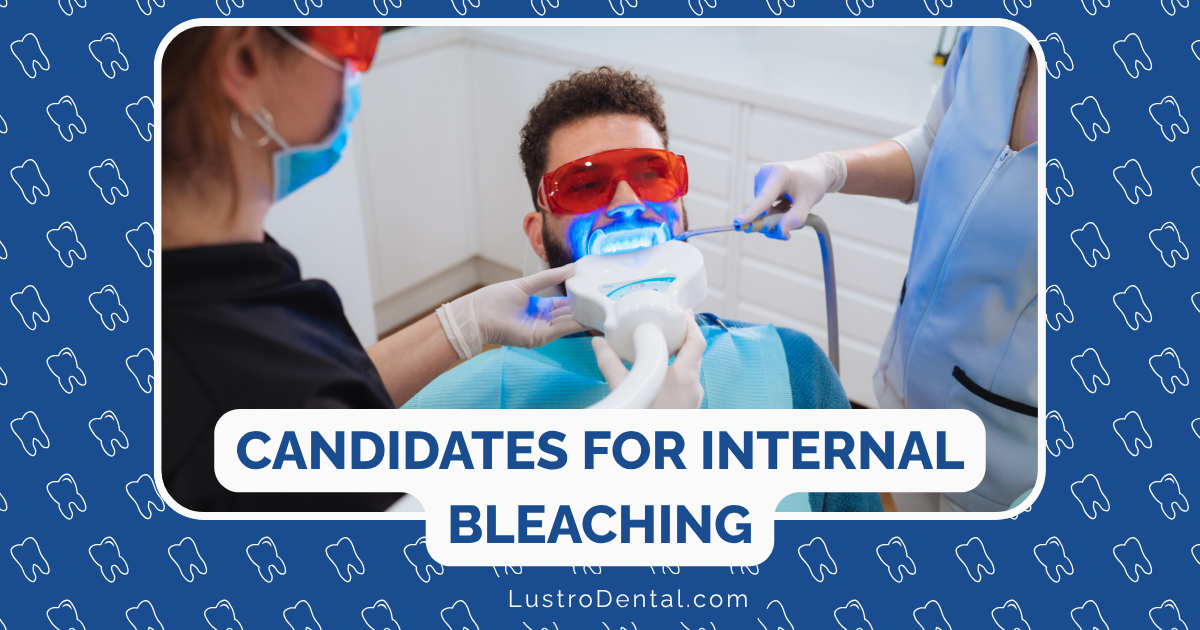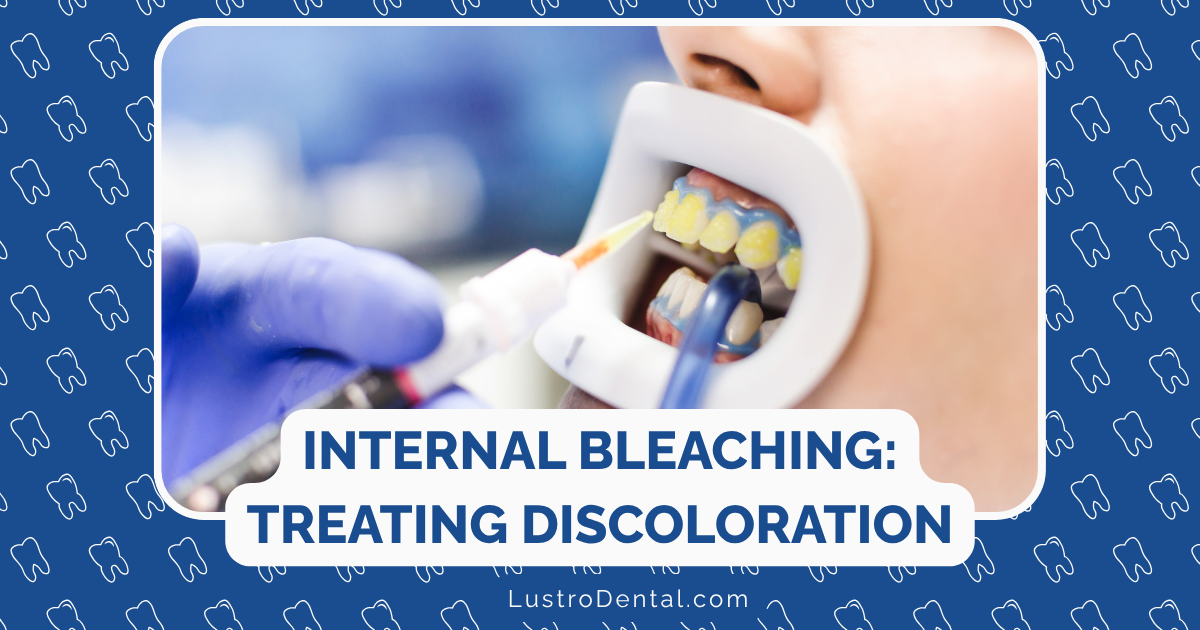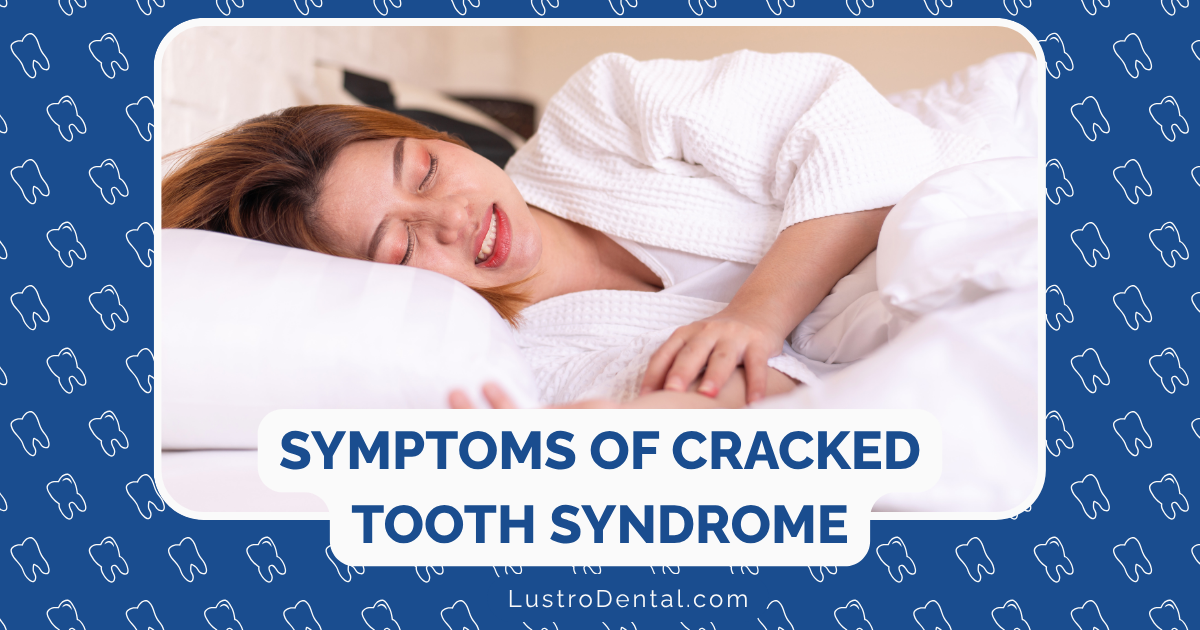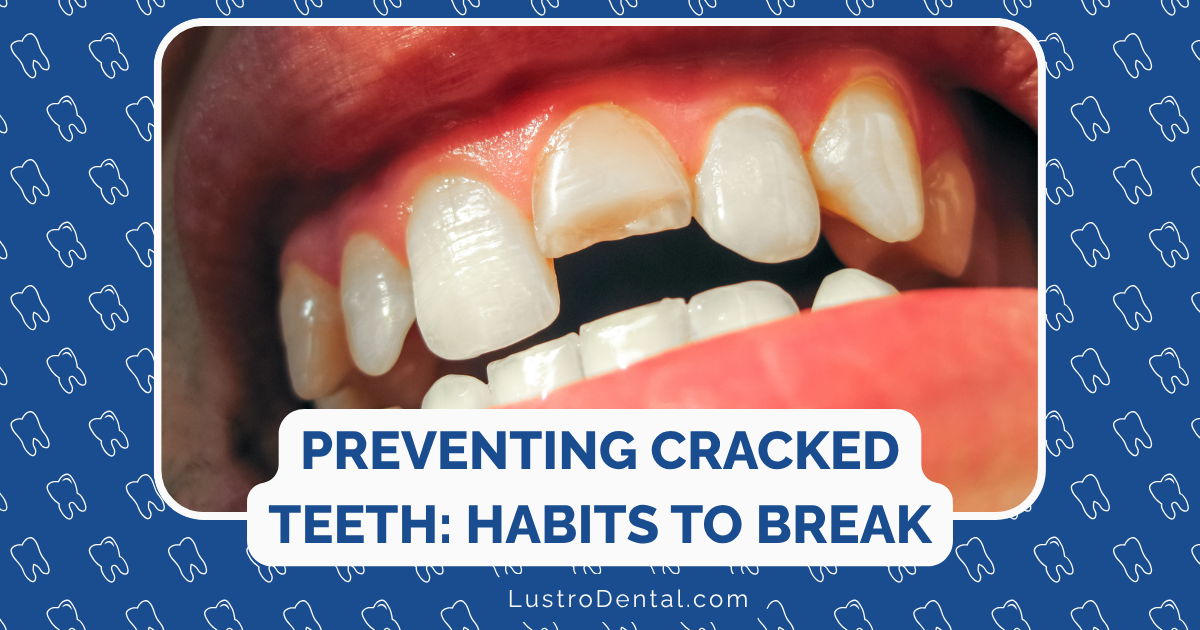Combining Internal and External Bleaching for Optimal Results
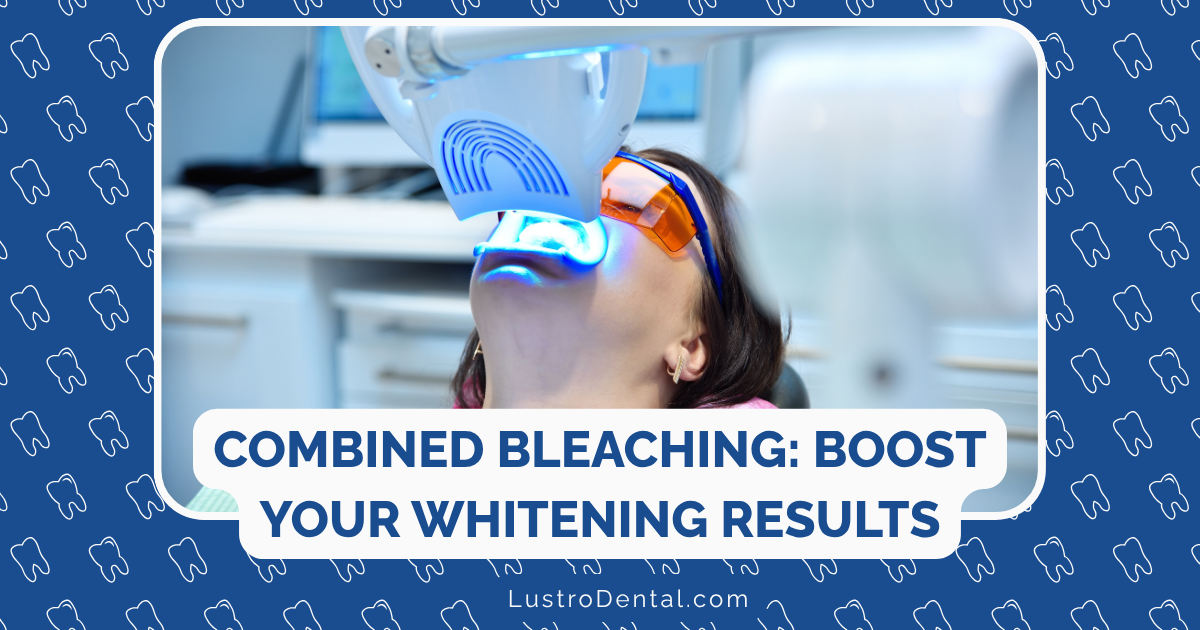
When it comes to treating severely discolored teeth, sometimes a single approach just isn’t enough. For patients with complex discoloration—particularly those with both internal (intrinsic) and external (extrinsic) staining—combining internal and external bleaching techniques can deliver remarkable results that neither method could achieve alone.
As someone who’s guided many patients through their dental whitening journey, I’ve seen firsthand how this combined approach can transform even the most challenging cases. Let’s explore how these techniques work together, who can benefit, and what to expect from this comprehensive whitening strategy.
Understanding the Two Bleaching Approaches
Before diving into the combined technique, it’s helpful to understand how each method works individually:
Internal Bleaching (Non-vital Whitening)
Internal bleaching targets discoloration from within the tooth structure. It’s typically used for:
- Teeth that have undergone root canal treatment
- Teeth discolored due to trauma or injury
- Teeth with intrinsic staining that doesn’t respond to external whitening
The procedure involves placing a bleaching agent inside the tooth’s pulp chamber, where it works to break down stain molecules from the inside out.
External Bleaching (Conventional Whitening)
External bleaching addresses stains on the outer surface of teeth. It’s used for:
- Surface stains from food, beverages, or tobacco
- Age-related yellowing
- Mild to moderate intrinsic discoloration
- Multiple teeth requiring whitening
This approach applies bleaching agents to the external tooth surfaces, typically using trays, strips, or in-office light-activated systems.
The Combined Approach: Inside-Outside Bleaching Technique
The inside-outside bleaching technique (also called combined bleaching) represents a comprehensive approach that addresses both internal and external discoloration simultaneously. This method is particularly valuable for cases where a tooth has undergone root canal treatment but also shows external staining, or when a single discolored tooth needs to match surrounding teeth that are being whitened.
Dr. Sarah Johnson, endodontist at University Dental Institute, explains: “The inside-outside technique essentially creates a ‘sandwich’ effect, with bleaching agents working from both directions to meet in the middle. This can significantly reduce treatment time and improve results for challenging cases.”
How the Combined Technique Works
The inside-outside bleaching technique typically follows these steps:
1. Initial Assessment and Preparation
- Comprehensive examination of the discolored teeth
- Diagnosis of the type and cause of discoloration
- Treatment planning, including shade documentation
- For teeth requiring internal bleaching, access to the pulp chamber is created or reopened
- Thorough cleaning of the pulp chamber and removal of any stained dentin
2. Protective Barrier Placement
A critical safety step for teeth receiving internal bleaching:
- A protective barrier (typically glass ionomer cement) is placed at the level of the gumline
- This barrier prevents the bleaching agent from leaking into the root canal or surrounding tissues
- It helps reduce the risk of external cervical resorption, a rare but serious complication
3. Internal Bleaching Component
Unlike the traditional “walking bleach” technique where the access cavity is sealed, in the combined approach:
- The access cavity remains open (but protected)
- A small amount of bleaching agent is placed in the pulp chamber
- The opening is covered with a cotton pellet or temporary material that can be easily removed by the patient
4. External Bleaching Component
Simultaneously, external bleaching is implemented:
- Custom trays are fabricated to fit precisely over the teeth
- The trays are designed with a reservoir over the discolored tooth to hold additional bleaching material
- The patient applies bleaching gel (typically 10-16% carbamide peroxide) in the trays
- The gel works on both the external surfaces of all teeth and enters the access opening of the non-vital tooth
5. Treatment Protocol
Dr. Michael Chen of Advanced Dental Specialists outlines a typical protocol: “Patients usually wear the trays for 2-4 hours daily or overnight for 1-2 weeks. They’re instructed to place a small amount of bleaching gel in the access cavity of the non-vital tooth before inserting the trays, which ensures continuous bleaching from both directions.”
6. Monitoring and Adjustment
- Regular check-ups (typically every 3-7 days) to assess progress
- Shade evaluation and comparison with initial documentation
- Adjustment of bleaching concentration or duration if needed
- Treatment continues until the desired shade is achieved
7. Completion and Final Restoration
- Once optimal whitening is achieved, the internal bleaching agent is removed
- The access cavity is thoroughly cleaned
- A waiting period of 1-2 weeks allows the shade to stabilize and residual oxygen to dissipate
- The access cavity is permanently sealed with a tooth-colored composite restoration
Advantages of the Combined Approach
The inside-outside technique offers several benefits over single-method approaches:
1. Enhanced Whitening Effectiveness
Research published in the Journal of Endodontics demonstrates that the combined approach can achieve better results than either technique alone, particularly for severely discolored teeth. The dual-action approach addresses both deep intrinsic stains and surface discoloration simultaneously.
2. Reduced Treatment Time
- Traditional internal bleaching (walking bleach) typically requires multiple office visits over several weeks
- The combined approach often achieves desired results in 1-2 weeks
- Fewer office visits are needed, as much of the treatment is performed at home
3. Improved Color Matching
One of the most significant advantages is the ability to match a non-vital tooth with surrounding teeth that are also being whitened, creating a more uniform smile.
4. Cost-Effectiveness
Compared to alternatives like crowns or veneers, the combined bleaching approach is:
- Less expensive
- Less invasive
- More conservative of natural tooth structure
5. Patient Convenience
Dr. Lisa Wong, cosmetic dentist at City Dental Center, notes: “Patients appreciate the convenience of treating all their discolored teeth simultaneously rather than addressing the non-vital tooth separately. This integrated approach streamlines the whitening process.”
Potential Disadvantages and Considerations
While the combined technique offers significant benefits, it’s not without challenges:
1. Requires Patient Compliance
The success of the inside-outside technique depends heavily on patient adherence to the prescribed protocol. Patients must be willing and able to:
- Apply bleaching agents correctly
- Maintain good oral hygiene
- Follow the recommended treatment schedule
- Keep follow-up appointments
2. Technique Sensitivity
The procedure requires careful execution to avoid complications:
- Proper barrier placement is critical
- The access opening must be adequately protected between treatments
- Patients must be instructed in proper application techniques
3. Risk of Bacterial Contamination
Because the access cavity remains open during treatment, there’s a theoretical risk of bacterial contamination. To mitigate this:
- Patients are instructed in proper cleaning techniques
- Antimicrobial agents may be recommended
- The treatment period is kept as short as possible
4. Not Suitable for All Cases
The combined approach isn’t appropriate for every patient. It may not be recommended for:
- Teeth with significant structural damage
- Patients with poor oral hygiene
- Individuals who cannot follow the required protocol
- Cases where the discoloration is unlikely to respond to bleaching
Ideal Candidates for Combined Bleaching
The inside-outside technique is particularly well-suited for:
1. Patients with Root Canal-Treated Teeth That Are Severely Discolored
When a non-vital tooth shows significant discoloration that hasn’t responded to external bleaching alone, the combined approach can provide more dramatic improvement.
2. Individuals with Both Intrinsic and Extrinsic Staining
Many patients have multiple types of discoloration affecting their teeth. The combined approach addresses both simultaneously.
3. Cases Requiring Color Matching Between Non-vital and Vital Teeth
When a single discolored tooth needs to match surrounding teeth that are also being whitened, the combined technique ensures a more uniform result.
4. Patients Seeking Alternatives to More Invasive Treatments
For those looking to avoid crowns or veneers, combined bleaching offers a more conservative option that preserves natural tooth structure.
Success Rates and Longevity
Research on the combined bleaching technique shows promising results:
- Initial success rates: 85-95% of cases achieve good to excellent results
- Color stability: Studies indicate that results from the combined technique may be more stable long-term than from internal bleaching alone
- Patient satisfaction: Over 90% of patients report satisfaction with the aesthetic improvement
A 2023 study in the International Journal of Esthetic Dentistry found that teeth treated with the combined approach maintained their improved shade for an average of 3-5 years, with some cases showing stability beyond 7 years.
The Modified Combined Technique: A Safer Alternative
Recent innovations have led to a modified version of the inside-outside technique that addresses some of its disadvantages:
The Sealed Combined Approach
This variation:
- Uses a temporary filling material that patients can remove and replace at home
- Provides better protection against bacterial contamination
- Reduces the risk of accidental ingestion of bleaching materials
- Offers improved control over the bleaching process
Dr. Johnson explains: “The sealed approach gives us the benefits of combined bleaching while addressing the main concerns about leaving the access cavity completely open. It’s a good middle ground between the walking bleach and traditional inside-outside techniques.”
What to Expect During Treatment
If you’re considering the combined bleaching approach, here’s what the experience typically involves:
Initial Consultation and Planning
- Comprehensive examination and diagnosis
- Discussion of treatment options and expected outcomes
- Development of a customized treatment plan
- Shade documentation and photographs
Treatment Phase
- Preparation appointment: Access creation/reopening, barrier placement, tray fabrication
- Home phase: Daily application of bleaching agents (internal and external)
- Monitoring appointments: Every 3-7 days to assess progress
- Treatment duration: Typically 1-2 weeks, though some cases may require longer
Completion
- Final evaluation of results
- Permanent sealing of the access cavity
- Post-treatment care instructions
- Follow-up appointment to assess stability
Maintaining Your Results
To extend the longevity of your whitening results:
- Practice excellent oral hygiene: Brush twice daily and floss regularly
- Limit staining substances: Reduce consumption of coffee, tea, red wine, and tobacco
- Consider periodic touch-ups: External bleaching can be repeated as needed
- Attend regular dental check-ups: Your dentist can monitor the treated teeth
- Address any signs of regression promptly: Early intervention can prevent significant color relapse
Final Thoughts
The combined internal-external bleaching technique represents an innovative approach to addressing complex tooth discoloration. By harnessing the strengths of both methods, it offers a conservative, effective solution for cases that might otherwise require more invasive treatments.
While not suitable for every situation, for the right candidates, this comprehensive approach can deliver dramatic improvements in tooth color and overall smile aesthetics. As with any dental procedure, success depends on proper case selection, careful technique, and good communication between the dental team and patient.
If you’re struggling with discolored teeth—particularly if you have a root canal-treated tooth that doesn’t match your other teeth—consider discussing the combined bleaching approach with your dentist. It might just be the solution you’ve been looking for.
Have you experienced combined internal-external bleaching? Share your experience or questions in the comments below.




